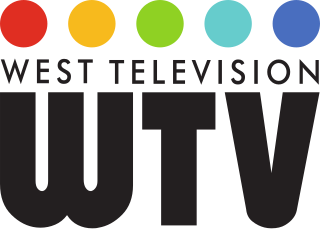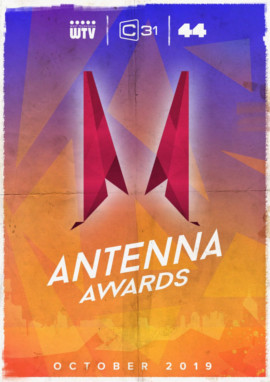Related Research Articles

Television broadcasting in Australia began officially on 16 September 1956, with the opening of TCN-9, quickly followed by national and commercial stations in Sydney and Melbourne, all these being in 625-line black and white. The commencement date was designed so as to provide coverage of the Olympic Games in Melbourne. It has now grown to be a nationwide system that includes a broad range of public, commercial, community, subscription, narrowcast, and amateur stations.

Network 10 is an Australian commercial television network owned by Ten Network Holdings, a division of the Paramount Networks UK & Australia subsidiary of Paramount Global. One of five national free-to-air networks, 10's owned-and-operated stations can be found in the state capital cities of Sydney, Melbourne, Brisbane, Adelaide and Perth while affiliates extend the network to regional areas of the country.

TVW is a television station broadcasting in Perth, Western Australia, wholly owned by Seven West Media. It was the first television station in Western Australia, commencing broadcasting on 16 October 1959. It broadcasts a modulated 64-QAM signal of five DVB channels. The primary channel was available as a PAL-B modulated simulcast on VHF channel 7 at 182.25 MHz before being discontinued in the first half of 2013; it had been the station's primary signal since its inception. The TVW callsign stands for TV (Television) Western Australia.

Television in Australia began experimentally as early as 1929 in Melbourne with radio stations 3DB and 3UZ, and 2UE in Sydney, using the Radiovision system by Gilbert Miles and Donald McDonald, and later from other locations, such as Brisbane in 1934.
In Australia, regional television is the local television services outside of the five main Australian cities.
NEW is a television station broadcasting in Perth, Western Australia, and is a member of Network 10. Out of the three commercial stations, NEW generally rates the lowest overall, but usually rates highest in its target demographic.

C31 Melbourne is a free-to-air community television channel in Melbourne, Victoria, Australia. Its name is derived from UHF 31, the frequency and channel number reserved for analogue broadcasts by metropolitan community television stations in Australia.

ABC Television in Western Australia comprises national and local programming on the ABC television network in the Australian state of Western Australia, on a number of channels under the ABC call sign. There is some local programming from the Perth studio.

Television Sydney (TVS) was a free-to-air sponsors-based community television station broadcasting in Sydney, Australia. The station lost both its community franchise and the battle to remain on the air on 8 December 2015 and ceased transmission on 20 December 2015 after almost ten years on the air. The station was not replaced.

Channel 44 is a free-to-air community television channel in Adelaide, South Australia. C44 features locally and nationally made content and has been broadcasting since 23 April 2004. Previously known as C31 when on analogue television, C44 made the switch to digital on 5 November 2010 and switched off its analogue signal on 31 May 2012. C44 airs a range of local, interstate and international content that is relevant to the local community.

RMITV is a not-for-profit, community access television production facility based at RMIT University City Campus in Melbourne, Australia. It is a full member of the Melbourne Community Television Consortium, a not-for-profit consortium that operates the community access channel C31 which broadcasts throughout Melbourne and Geelong.

This timeline of Australian television lists important station launches, programs, major television events, and technological advancements that have significantly changed the forms of broadcasting available to viewers of television in Australia. The history of television in Australia can be traced back to an announcement from the Menzies' government concerning plans for television services in Sydney and Melbourne.

Hitchhike TV is a news website. Originating as Brisbane community television channel Briz 31, the service became available on 28 February 2017 as the station's terrestrial broadcasting went offline but started serving news through their website to the viewers.
Digital broadcast radio in Australia uses the DAB+ standard and is available in Sydney, Melbourne, Brisbane, Perth, Adelaide, Canberra, Darwin and Hobart. However, after 11 years, regional large cities such as Townsville and Ballarat still do not have DAB. The national government owned television/radio networks, the ABC and SBS, and the commercial radio stations in each market provide many of their services and a few digital-only services on the digital platform. Australia uses the AAC+ codec provided with upgraded DAB+ standard.

West TV was a free-to-air community television station that began broadcasting in standard-definition digital format on logical channel 44 in Perth, Western Australia at 10 am on 10 April 2010.

Extra is an Australian free-to-air television channel launched on 26 March 2012. It broadcasts mainly infomercials, religion, community, educational, multi-cultural programming as well as stories taken from Nine Network programs including A Current Affair, Getaway, Today and Today Extra.
West Digital Television is an Australian digital television network jointly owned by Seven West Media and WIN Corporation. It broadcasts free-to-air on a number of digital terrestrial transmitters in regional and remote areas of Western Australia, as well as free-to-view on the Viewer Access Satellite Television service. The network began as an affiliate of Network 10, remaining so until 1 July 2016, when it switched to the Nine Network. On 1 July 2021, it returned to Network 10, broadcasting a direct feed of NEW-10 Perth.
CTV 41 Bendigo was a free-to-air community television station based in Bendigo. The station was awarded a trial licence in July 1996 for broadcasting on UHF 41. On 2 April 1998, the Australian Broadcasting Authority, regulator of television and radio broadcasting in Australia, decided to not renew the trial licences of community broadcasters that were not yet on-air, but the intervention of the Community Broadcasting Association of Australia prompted the extension of such licences from 1 July 1998 to 30 June 1999.

The 2019 Antenna Awards were held on 5 October 2019 at the Deakin Edge at Federation Square in Melbourne. The ceremony was announced on 4 July 2019, and recognised excellence in Australian community television of the eligibility period, running between 1 July 2014 and 30 June 2019.
The 2021 Antenna Awards ceremony is scheduled for 18 September 2021, instead of 29 May 2021 at the Deakin Edge at Federation Square in Melbourne. The ceremony was announced on 15 July 2019 and will recognize excellence in Australian community television of the eligibility period, running from 1 July 2019 to 19 March 2021.
References
- ↑ Turner, Graeme; Cunningham, Stuart (25 July 2020). The Australian TV Book. Taylor & Francis. ISBN 9781000247916.
- ↑ "Community TV: Malcolm Turnbull confirms licensing for stations will end in 2015". ABC News. 10 September 2014. Retrieved 26 January 2016.
- ↑ Knox, David (17 September 2015). "Community TV lifeline: extended to 2016". TV Tonight. Retrieved 26 January 2016.
- ↑ Christensen, Nic (21 December 2015). "Community TV station TVS goes off-air but aims to relaunch with video on demand service". Mumbrella . Retrieved 31 January 2016.
- ↑ Knox, David (15 December 2016). "New switch-off date for Community TV". TV Tonight. Retrieved 18 December 2016.
- ↑ "Channel 31 gets a six-month reprieve on free-to-air TV shutdown". Sydney Morning Herald . Sydney. 27 June 2017. Retrieved 27 June 2017.
- ↑ Wallbank, Paul (15 September 2017). "The devil in the detail: The deals the government made to get media reforms across the line". Mumbrella . Retrieved 31 December 2017.
- ↑ Harris, Rob (13 September 2017). "Media reform: Government clinches deal with crossbench". Herald Sun . Melbourne. Retrieved 31 December 2017.
- ↑ Clun, Rachel (8 March 2017). "Briz 31 ceases television broadcast, but online future has 'huge potential'". Brisbane Times . Retrieved 11 March 2017.
- ↑ "Community television broadcasters granted two year licence extension" (Press release). Canberra. Department of Communications and the Arts. 1 June 2018. Archived from the original on 6 June 2018. Retrieved 6 June 2018.
- ↑ "Final 12-month licence extension for Melbourne and Adelaide community TV to finalise digital transition" (Press release). Canberra. Department of Communications and the Arts. 30 June 2020. Archived from the original on 28 August 2020. Retrieved 28 August 2020.
- ↑ Kelsall, Thomas (24 June 2021). "Channel 44 off death row with three-year licence extension". InDaily . Retrieved 26 June 2021.
- ↑ Sutton, Malcolm (23 June 2021). "Community TV stations Channel 31 and Channel 44 given three-year lifeline in surprise turnaround". ABC News. ABC Radio Adelaide. Australian Broadcasting Corporation . Retrieved 3 July 2021.
- ↑ "Briz 31 ceases television broadcast, but online future has 'huge potential'". 8 March 2017.
- ↑ "WTV Perth | Channel 44 West TV | Western Australian Community TV - Western Australian Community TV". WTV Perth | Channel 44 West TV | Western Australian Community TV – Western Australian Community TV. Retrieved 22 July 2023.
- ↑ Knox, David (20 February 2020). "WTV off air in Perth "until further notice" | TV Tonight". TV Tonight . Retrieved 22 July 2023.
- ↑ "Still hope for Hunter TV station". Maitland Mercury . 23 July 2014. Retrieved 22 July 2023.
- ↑ "CTV Plus Australia". ctvplus.org.au. 16 November 2022. Retrieved 22 July 2023.
- ↑ Slatter, Sean (12 August 2021). "Community stations launch CTV+ streaming service". if.com.au . Retrieved 22 July 2023.
- ↑ Vann-Wall, Silvi (24 August 2022). "CTV+ app is Australia's first community broadcast streaming service". ScreenHub Australia. Retrieved 27 September 2022.